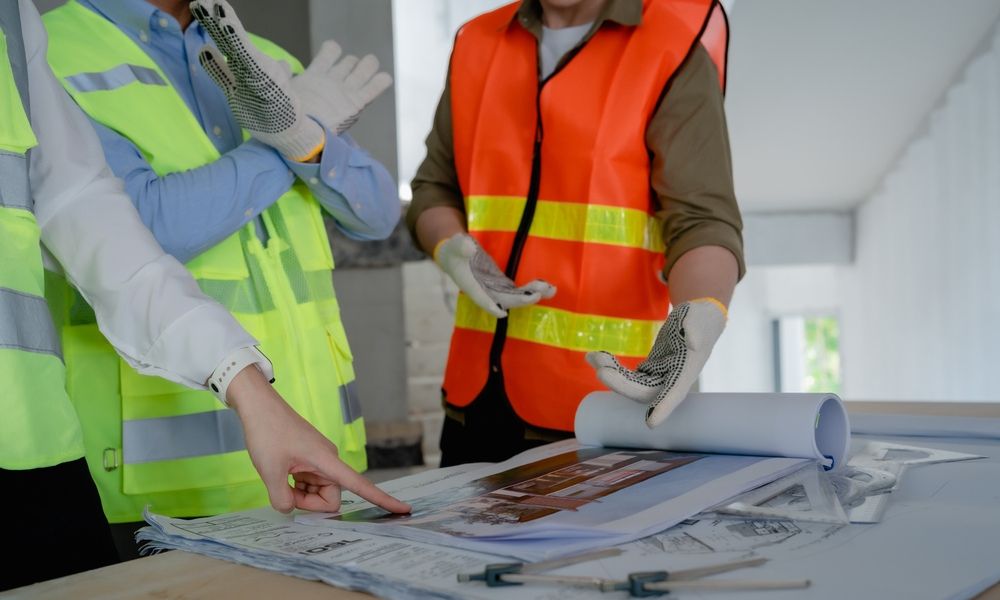Material takeoff (MTO) is a critical step in construction estimating, requiring precision, organization, and attention to detail. This process involves quantifying the exact materials needed for a project, including concrete, lumber, steel, and finishes. Any missteps in material takeoff can lead to costly errors, project delays, and budget overruns. By identifying and avoiding common mistakes, construction professionals can enhance accuracy, streamline procurement, and ensure a smoother project flow.
We’ll explore the most common mistakes made during material takeoff and offer practical tips to help you avoid them, making your estimating process more efficient and reliable.
What is Material Takeoff?
Material takeoff is the process of measuring and listing all materials required for a construction project. This involves analyzing project blueprints, drawings, and specifications to quantify everything from structural components to finishing materials. Material takeoff serves as the foundation for budgeting, procurement, and project scheduling. An accurate takeoff ensures that all materials are accounted for, supporting efficient resource management and cost control.
However, even seasoned estimators can make errors that lead to budget and project management issues. Understanding these common mistakes and knowing how to prevent them will greatly improve your material takeoff process.
Common Mistakes in Material Takeoff and How to Avoid Them
By proactively addressing these frequent issues, you can increase the accuracy and efficiency of your material takeoffs.
Failing to Use Updated Project Documents
Using outdated project documents is one of the most common mistakes in material takeoff. Working from an older version of the blueprint or specification document can lead to incorrect measurements and miscalculated material needs.
- Solution: Always verify that you’re using the latest versions of all project documents. Coordinate with architects, engineers, and designers to ensure you have the most recent updates. A quick document check before starting can save time and prevent errors.
Not Calibrating Scale on Digital Drawings
When using digital tools for material takeoff, it’s essential to calibrate the scale correctly. Miscalibration can lead to significant errors in measurement, causing inaccurate material quantities.
- Solution: Use the calibration feature on your takeoff software, such as Bluebeam Revu or PlanSwift, to ensure accurate measurements. Double-check the scale on each document before starting your calculations.
Inconsistent Units of Measurement
Using inconsistent units across materials can cause confusion and errors in material estimates. For example, measuring one material in square feet and another in square meters can complicate calculations and lead to misinterpretation during procurement.
- Solution: Standardize units of measurement for each material type. Select units that align with your suppliers’ standards and keep them consistent throughout the takeoff sheet.
Neglecting to Account for Material Waste

Overlooking material waste is a common mistake, often resulting in material shortages. Factors such as cutting, fitting, and breakage can lead to material loss, particularly for materials like concrete, tiles, or drywall.
- Solution: Include a waste allowance in your calculations for each material type. This buffer should be based on historical data and industry standards—typically between 5-10% depending on the material.
Failing to Double-Check Quantities
Even with the help of digital tools, mistakes in measurements or counting can occur. Without a verification process, small errors in quantities can significantly impact a project’s budget and timeline.
- Solution: Establish a peer-review process where another team member reviews the material takeoff sheet. Additionally, develop a checklist to ensure all material types have been accounted for.
Ignoring Overlapping Material Requirements
In complex projects, certain materials may be required in multiple project areas. For example, steel may be used in both structural framing and exterior features. Ignoring these overlapping requirements can lead to under-ordering or project delays.
- Solution: Carefully review each section of the project to identify materials used in multiple areas. Cross-check different sections of the blueprint to avoid both double-counting and underestimating.
Relying Solely on Manual Takeoff Methods
While manual takeoff methods can be effective, they are prone to human error and can be time-consuming, especially for larger or complex projects. Relying solely on manual calculations increases the risk of mistakes.
- Solution: Use digital takeoff tools such as Bluebeam Revu, PlanSwift, or CostX to streamline the process. These tools allow for automated calculations, easy updates, and accurate measurements directly from digital plans.
Poor Organization of Takeoff Sheets
A poorly organized takeoff sheet makes it difficult to review, update, or communicate data. Without a clear structure, essential details may be overlooked, leading to errors in material estimation.
- Solution: Structure your takeoff sheet with categories like structural, finishing, and MEP materials. Use headers, subcategories, and consistent formatting to make it easy to navigate and understand.
Not Using Layers and Filters in Digital Tools
Digital tools offer features like layers and filters to help organize takeoff data. Failing to use these features can make it challenging to manage materials, especially in complex projects with multiple trades or phases.
- Solution: Utilize layers to separate materials by trade or project section. Filters allow you to view specific materials or phases, making it easier to review and update quantities.
Overlooking Regular Updates on Takeoff Sheet
Projects often undergo design changes, material substitutions, or scope adjustments. Failing to update the takeoff sheet with these changes can lead to incorrect material orders and delays.
- Solution: Regularly review and update the takeoff sheet as project details change. Communicate these updates to all relevant team members, ensuring that everyone has the latest information.
Not Planning for Phased Deliveries
For large projects, ordering all materials upfront may be impractical. However, failing to plan phased deliveries can lead to material shortages or on-site storage issues.
- Solution: Coordinate with suppliers to schedule phased deliveries according to the project timeline. Phased deliveries ensure that materials arrive when needed, preventing storage and logistics challenges.
Ignoring Sustainable Material Options
Sustainable materials can enhance project appeal and reduce environmental impact, but they are often overlooked during material takeoff. Failing to consider eco-friendly options can be a missed opportunity.
- Solution: Evaluate sustainable material alternatives where possible. For instance, look for recycled materials or materials with lower carbon footprints, such as sustainably sourced timber.
The Benefits of Avoiding Common Material Takeoff Mistakes
Avoiding common material takeoff mistakes provides several advantages, including:
- Enhanced Accuracy: By minimizing errors, you ensure accurate material quantities, which supports precise budgeting and procurement.
- Cost Savings: Efficient takeoff practices prevent over-ordering, reduce waste, and help maintain the project budget.
- Improved Project Efficiency: Proper planning and organized takeoff sheets contribute to smoother workflows and fewer delays.
Implementing these best practices will help you develop a more accurate and reliable material takeoff process, benefiting both your team and the project.
Conclusion
Material takeoff is a vital part of construction estimating, and accuracy is essential to avoid costly mistakes. By using the latest documents, calibrating digital tools, standardizing units, and implementing verification processes, you can ensure a smooth and effective takeoff process. For construction professionals, mastering these skills not only improves estimating accuracy but also enhances project efficiency and cost control.
Whether you’re handling small residential builds or complex commercial projects, avoiding these common mistakes in material takeoff will support better outcomes and contribute to project success.
Advance Your Material Takeoff Skills with Our Quantity Surveying Course
Ready to master material takeoff and enhance your construction estimating skills? Enroll in our Online Quantity Surveying Course to learn essential techniques, avoid common mistakes, and use digital tools for accurate takeoffs. Build the expertise you need to excel in quantity surveying and project estimation.
Enroll Now in Our Quantity Surveying Course and start your journey toward becoming a skilled construction estimator!




